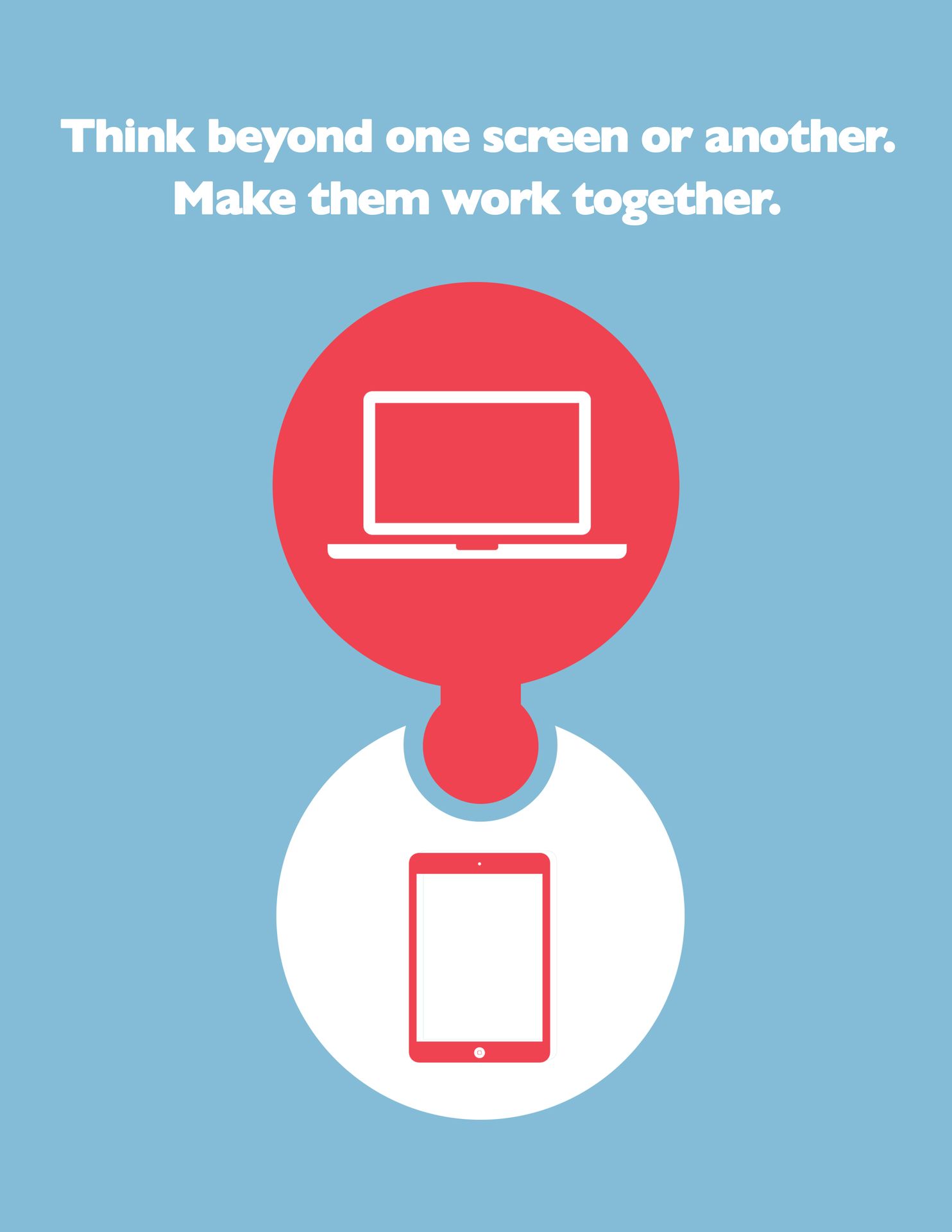3 Key Insights: Getting More From Mobile + Desktop
Justin Stauffer Boomer Marketing, Digital Direct Marketing, Medicare Marketing, Trends and POV Rachel Silva, Blog co-author, DMW VP of Strategy & Innovation. Read more from Rachel.
Rachel Silva, Blog co-author, DMW VP of Strategy & Innovation. Read more from Rachel.
Does anyone need to be told how important “mobile” has become over the past 10 years? Not likely. But what may be surprising is just how much it is changing overall consumer behavior on the Web.
At First Glance: Mobile Is Conquering The Online World
A newly released report from Adobe Analytics indicates that smartphones are driving nearly all growth in U.S. Web traffic. The report goes on to say that since January 2015, there has been a 68% increase in smartphone Web traffic in the U.S. Meanwhile, both desktop and tablet use saw declines.
Supporting this trend, mobile advertising spending will reach approximately $87 billion in the U.S. by 2020, per a 2016 eMarketer report. Search and display marketing tactics will still dominate how these dollars are spent. But, as is often the case, a quick read of some numbers gives a very surface, one-dimensional view of a deeper marketplace reality. Digging a little deeper reveals actionable insight for your digital direct marketing.
Insight #1: It’s Not Just Millennials: Boomers Are Also Driving Change
Think this is only a trend among millennial audiences? Think again.
AARP released the results of a survey in 2016. This study confirmed the percentage of Baby Boomers who own smartphones has grown to 74%. Nearly half (40%) of their overall site traffic comes from a smartphone.
“Baby Boomers are the largest generation out there and while there are a lot of millennials, our Boomers are outspending them 2 to 1,” according to AARP. “Boomers are active, take on social responsibility, have discretionary income and are of course tech savvy adapters.”
At DMW, we can second this perspective. As digital direct marketers, we constantly report and analyze empirical data that tracks beyond clicks to uncover actual sales behavior. We have long seen hard data to support this from our clients in the Medicare industry, who focus on 65+ consumers. In fact, for many of these Medicare health plans, mobile Web traffic makes up more than half of total traffic. As a result, we’ve tailored overall marketing strategies around this. And our clients see improved results.
 Insight #2: Think “Digital” (Not Just Mobile) Responsiveness
Insight #2: Think “Digital” (Not Just Mobile) Responsiveness
Websites: It’s no longer appropriate to think in terms of “desktop, tablet, or mobile” websites. Today, mobile is a given. It’s not a nice-to-have. Neither is it a discrete channel. Instead, think about your consumer’s behaviors in both a mobile website and a desktop site. (What are the key functions of each site? How will they solve our marketing objectives on mobile vs. desktop?)
Email: Approximately 55% of emails are opened on a smartphone or tablet. That means 45% are opened on desktop. That’s not 50/50, but obviously both are critically important. So, we design and develop emails to maximize deliverability and engagement rates (e.g., open rates, clicks) for both screens. Your message must be optimized for all consumers, regardless of which device they prefer.
Insight #3: It’s Digital (Not Just Mobile) Media Optimization
While the world changes and evolves, the foundational elements of media buying does not. Today, alert digital direct marketers cannot run separate “desktop” and “mobile” marketing campaigns. Rather, we advocate integrated campaigns using creative designed for multi-device ad distribution. Then, we optimize media for each client to meet their goals.
DMW’s Digital Direct Takeaway: Market On Mobile, Convert On Desktop
We recently conducted research and analysis of in-market results for Johns Hopkins Medicare Advantage MD. This Medicare plan, based in Maryland, consistently sees very high mobile usage. So the numbers have some statistical significance.
YoY, we see that mobile usage has significantly increased. And, while engagement starts there, it’s not the whole story: Conversions overwhelmingly occur on the desktop.
Going deeper yet, we performed a visitor path analysis. The conclusion: Individuals research Medicare plans on their phones, but actually sign up on their desktop computer. This behavior aligns with trends we’ve seen from other third-party research. It’s not mobile | desktop silos. It’s not mobile vs. desktop. It truly is a journey.
Why is this? Our data supports a number of cause and effect factors:
- The enrollment, or “buy” experience for many Medicare plans (and other involved purchases) is often lousy on mobile
- The process is more involved than, say, placing an Amazon order on your phone
- Old habits take a while to change
 Check out the truth behind “Boomer Myths.” Download White Paper here.
Check out the truth behind “Boomer Myths.” Download White Paper here.
The Bottom Line
Omnichannel digital marketing is essential across generations. Think beyond the one screen that you, or your consumer is looking at. It’s only a matter of time before the conversions cross that line, too.
At DMW, we have been focusing on Boomer trends and effective Boomer Response Marketing for years, it’s nice to see other organizations joining us. For some added insight, get our quick 50+ Facts on 50+ consumers or to download a whitepaper.